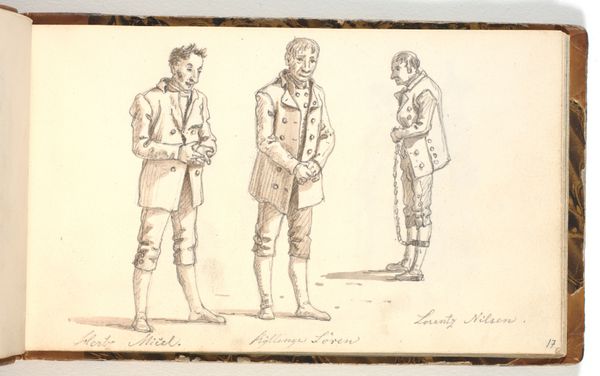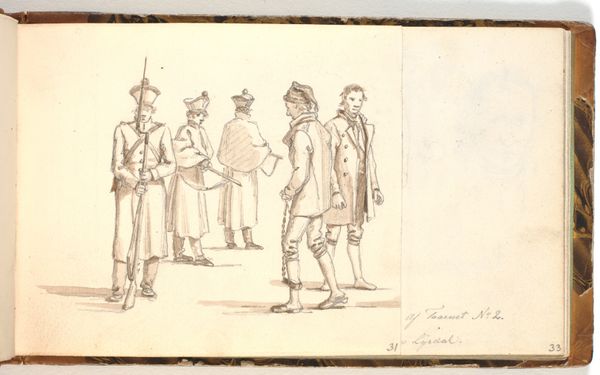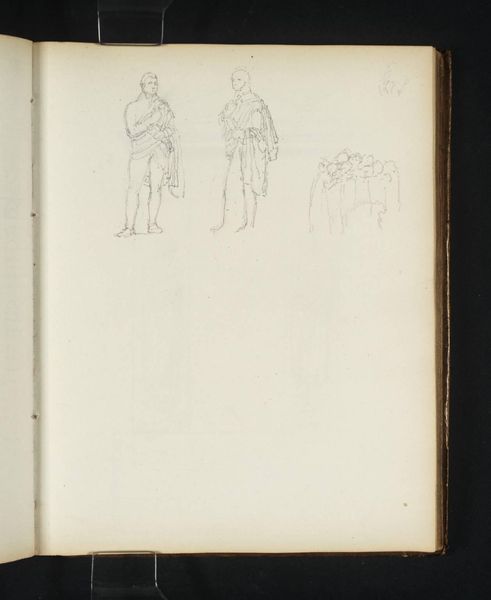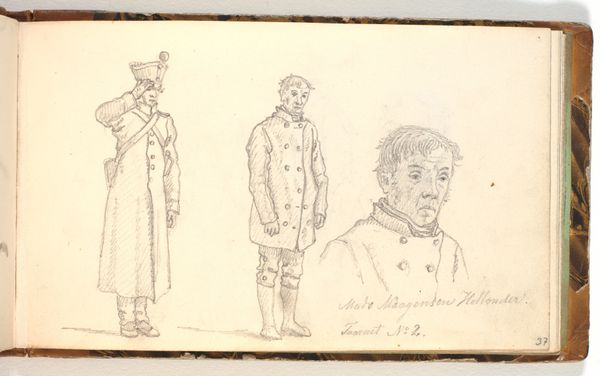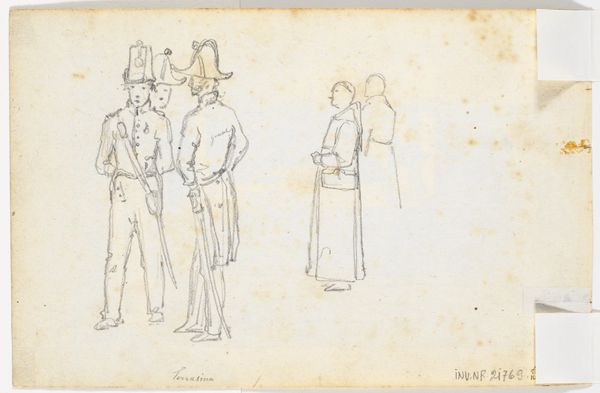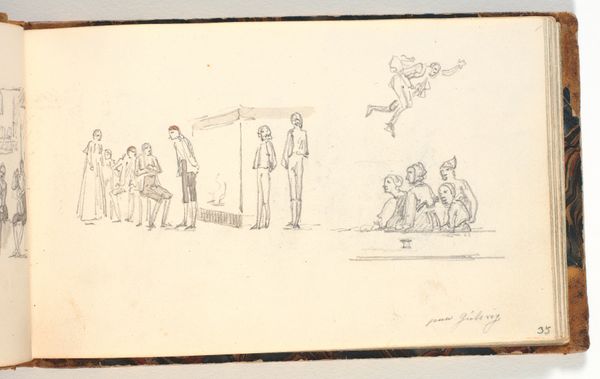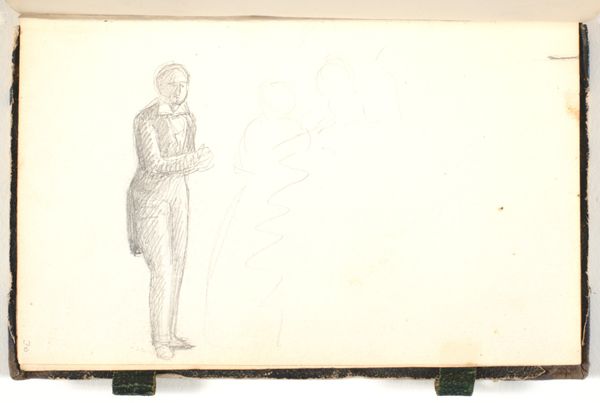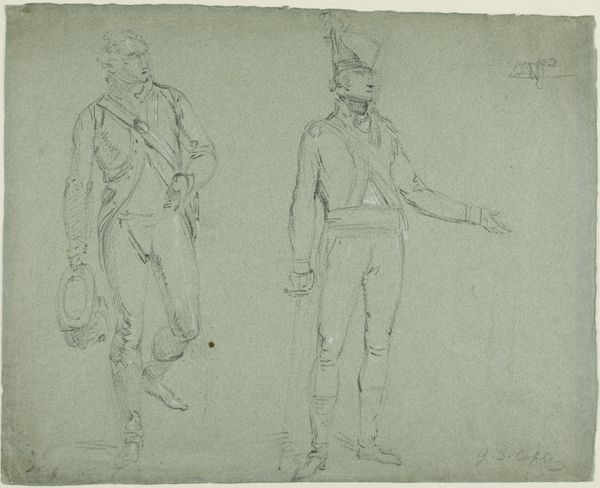
drawing, pencil
#
portrait
#
drawing
#
coloured pencil
#
pencil
#
genre-painting
#
academic-art
Dimensions: 105 mm (height) x 176 mm (width) (bladmaal)
Editor: This drawing, "Studier af fanger fra Forbedringshuset," or "Studies of prisoners from the Improvement House," by Martinus Rørbye, made in 1833 with pencil and coloured pencil, is quite striking. The stark depiction of these figures feels raw and unsettling. How should we interpret the artist's intentions in creating these images? Curator: This work gives us a glimpse into the socio-political context of early 19th-century Denmark, doesn't it? These weren't portraits commissioned for aesthetic purposes, but rather studies of inmates. We see them through the artist’s – and therefore, the institution’s – gaze. Consider the “Improvement House” itself: what were its goals, and how did that influence Rørbye's depiction? Were these studies for some other purpose, maybe to categorise or judge these people? Editor: So, it's less about artistic expression and more about documenting or even judging these individuals within a social structure. Is there a political implication behind the depiction of prisoners in this way? Curator: Absolutely. Remember, visual representations, even seemingly objective drawings, reinforce existing power structures. Think about the role institutions played and who had control over image production. Are these prisoners rendered as individuals or types? The choice affects how the public views them and the justice system. How might someone outside of Danish society understand it at the time? Editor: It shifts my perspective completely. I was focused on the artistic style, but now I realize that understanding the context is more critical in forming my own point of view of this image. I think that if Rørbye hadn't put a great deal of effort in their faces, they wouldn't come off so individualized as opposed to stereotypical representations. It really adds to the tone. Curator: Exactly! The intersection of art and social control is fascinating and, frankly, often disturbing, especially when we consider our own contemporary political and cultural views. This piece compels us to interrogate those very mechanisms of power. What do you make of its relation to the political implications today?
Comments
No comments
Be the first to comment and join the conversation on the ultimate creative platform.


